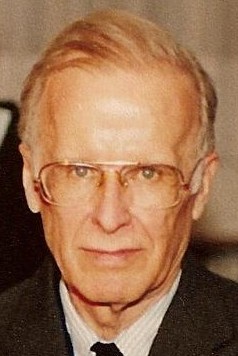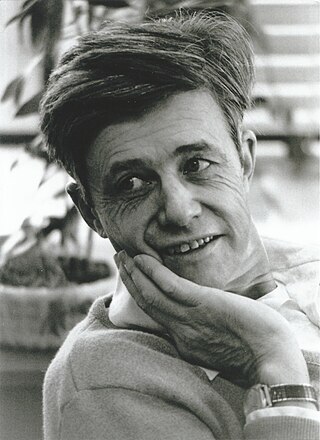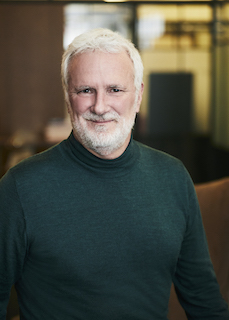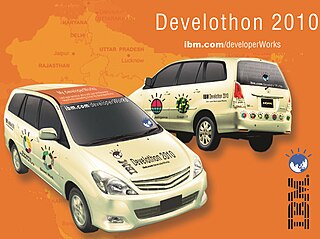
APL is a programming language developed in the 1960s by Kenneth E. Iverson. Its central datatype is the multidimensional array. It uses a large range of special graphic symbols to represent most functions and operators, leading to very concise code. It has been an important influence on the development of concept modeling, spreadsheets, functional programming, and computer math packages. It has also inspired several other programming languages.

Robert M. Frankston is an American software engineer and businessman who co-created, with Dan Bricklin, the VisiCalc spreadsheet program. Frankston is also the co-founder of Software Arts.

Frederick Phillips Brooks Jr. was an American computer architect, software engineer, and computer scientist, best known for managing the development of IBM's System/360 family of computers and the OS/360 software support package, then later writing candidly about those experiences in his seminal book The Mythical Man-Month.

John Warner Backus was an American computer scientist. He directed the team that invented and implemented FORTRAN, the first widely used high-level programming language, and was the inventor of the Backus–Naur form (BNF), a widely used notation to define formal language syntax. He later did research into the function-level programming paradigm, presenting his findings in his influential 1977 Turing Award lecture "Can Programming Be Liberated from the von Neumann Style?"

Kenneth Eugene Iverson was a Canadian computer scientist noted for the development of the programming language APL. He was honored with the Turing Award in 1979 "for his pioneering effort in programming languages and mathematical notation resulting in what the computing field now knows as APL; for his contributions to the implementation of interactive systems, to educational uses of APL, and to programming language theory and practice".

Roger D. Moore was the 1973 recipient of the Grace Murray Hopper Award from the Association for Computing Machinery (ACM). It was given "for their work in the design and implementation of APL\360, setting new standards in simplicity, efficiency, reliability and response time for interactive systems."
WATFIV, or WATerloo FORTRAN IV, developed at the University of Waterloo, Canada is an implementation of the Fortran computer programming language. It is the successor of WATFOR.
The Iverson Award, more formally the Kenneth E. Iverson Award for Outstanding Contribution to APL, is presented by the Special Interest Group on APL (SIGAPL) of the Association for Computing Machinery (ACM). It is presented to a person who has made significant contributions to the APL programming language or to the APL community. These contributions may be Technical or Service. The award consists of a plaque and a certificate, and is accompanied by a cash prize and a lifetime membership in SIGAPL.

Arthur Whitney is a Canadian computer scientist most notable for developing three programming languages inspired by APL: A+, k, and q, and for co-founding the U.S. companies Kx Systems and Shakti Software.
I. P. Sharp Associates (IPSA) was a major Canadian computer time-sharing, consulting and services firm of the 1970s and 1980s. IPSA is well known for its work on the programming language APL, an early packet switching computer network named IPSANET, and a powerful mainframe computer-based email system named 666 Box, stylized as 666 BOX. It was purchased in 1987 by Reuters Group, which used them until 2005 as a data warehousing center for business data.
Rank is a generalization of looping as used in scalar (non-array-oriented) programming languages. It is also a generalization of mapcar in the language Lisp and map in modern functional programming languages, and a generalization of scalar extension, inner (matrix) product, and outer product in APL\360. The canonical implementation of rank may be the language J, but it is also available in Dyalog APL, the International Organization for Standardization (ISO) technical standard on Extended APL, and NARS2000.
Lawrence Moser "Larry" Breed was a computer scientist, artist and inventor, best known for his involvement in the programming language APL.
The programming language APL is distinctive in being symbolic rather than lexical: its primitives are denoted by symbols, not words. These symbols were originally devised as a mathematical notation to describe algorithms. APL programmers often assign informal names when discussing functions and operators but the core functions and operators provided by the language are denoted by non-textual symbols.
Shared Variables are a feature of the programming language APL which allows APL programs running on one processor to share information with another processor. Although originally developed for mainframe computers, Shared Variables were also used in personal computer implementations of APL. Shared Variables could be used to control peripheral devices, or to communicate with external files, database management systems, or other users. Shared Variables were first introduced by International Business Machines Corporation (IBM) in their APL.SV software product in 1973, and are still available as of 2017, in APLs from IBM and Dyalog, for the operating systems Linux and Windows.

Develothon is a developer skill marathon aimed at helping the software developer community in India develop skills in newer technology areas. The name Develothon is derived from combining 'developerWorks' and 'Marathon'.
Trenchard More was a mathematician and computer scientist who worked at IBM's Thomas J. Watson Research Center and Cambridge Scientific Center after teaching at MIT and Yale.
Edward H. Sussenguth Jr. was an American engineer and former IBM employee, known best for his work on Systems Network Architecture (SNA). He was also a contributor to the architecture of IBM's Advanced Computer System (ACS).
Philip S. Abrams is a computer science researcher who co-authored the first implementation of the programming language APL.








